Starting with Tolkien, it’s become practically obligatory that the epic fantasy saga, somewhere around the middle of book three, feature an Epic Confrontation Between Good and Evil with a Cast of Thousands.
I am, I have to admit, a war buff. I read military histories for fun, the kind with fold-out maps covered in little colored arrows and notations like “Kollowrath (40,000)”. As I am also a fantasy novelist, the nature of war in fantasy fiction has always been fascinating to me.
And there is a lot of war in fantasy. Starting with Tolkien, it’s become practically obligatory that the epic fantasy saga, somewhere around the middle of book three, feature an Epic Confrontation Between Good and Evil with a Cast of Thousands. Various allies, painfully recruited over the course of the hero’s journey, turn up to lend a hand at the Final Battle. Various villains are dispatched, hapless orcs or equivalent humanoids are mowed down by the score, and just when things seem bleakest Evil is defeated forever. A beloved secondary character or two bites the dust, and someone gets to make a Heroic Sacrifice. Afterward, we may be treated to a scene where the hero roams a battlefield strewn with corpses, or visits the injured to bring home the horrors of combat. You know, war, right?
Back before I wrote fantasy myself, my wargamer friends and I used to snicker a bit at this. Most of the fantasy authors wouldn’t know a halberd from a half-pike, and their descriptions of battles were usually heavy on bold strokes and dramatic confrontations and light on tactics and the important of proper reconnaissance. I wouldn’t want to be a poor foot-slogger in either army, given the rate at which they tend to be chewed up by either the hero and his friends or some villain demonstrating the full extent of his power.
(To get roughly the same effect, find some friends who are computer professionals and take them to see any Hollywood movie featuring “hacking” and explosions.)
Now that I’ve taken up the pen myself, I have a better understanding of how strict realism sometimes has to give way to dramatic necessity, and that the reading public probably isn’t interested in the details of orc logistical and latrine arrangements. But I still found that a lot of the fantasy wars were still … well … bad. Bad from a realism point of view, certainly, but also from a dramatic or a story point of view. I found myself flipping past battle scenes to get back to the good stuff. But this wasn’t always true — some authors can write a battle that will knock your socks (or padded leather greaves) off — so I sat down to think about why.
What can you do to make sure your war doesn’t provoke too much snickering from the lead-soldiers crowd?
So, assuming you are a fantasy author, what can you do to make sure your war doesn’t provoke too much snickering from the lead-soldiers crowd? Probably more importantly, how can you make sure it works for the readers? And how do you accomplish all this without spending years at a research library?
I’ll go over a few options, roughly in increasing order of “difficulty” in the sense of “amount of work required”. Keep in mind, of course, that I’m still a war buff at heart, and so “realism” is something I care about. As usual, that’s just me, so don’t let my suggestions here constrain your imagination if you want to take a different path! What I hope to show, though, is that a little bit of realism goes a long way, and that getting the basics right is much more important, story-wise, than whether you use a matchlock musket with a socket bayonet.
War: What Is It Good For?
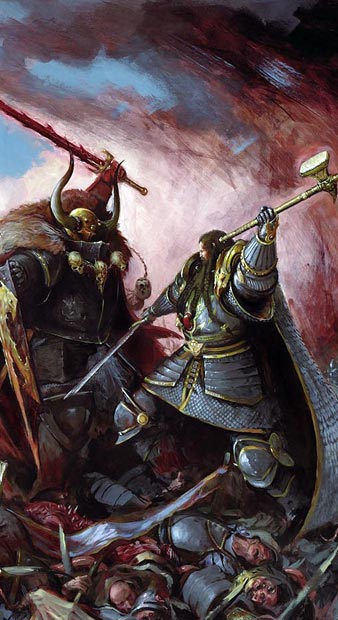 First things first. Do you really need a war?
First things first. Do you really need a war?
I ask only because a common mistake is to shoehorn a vast conflict into the end of the book, in the same way an action-movie director adds another car chase or gunfight — for the sake of visual spectacle. Unfortunately, this doesn’t work very well in a novel, because text is not a visual medium. You can’t impress a reader by the sheer size of an army, the awesome appearance of a monster, or the vast explosions of battle-magic.
So for the novelist, bigger is not always better. That’s not to say the stakes shouldn’t be high, of course, but the stakes only matter in terms of things the reader actually cares about. Nameless, faceless civilians don’t matter to the audience, and neither do interchangeable soldiers on a battlefield. If there’s going to be fighting, the tension can be higher when there aren’t a bunch of no-names around for both sides to practice their swordsmanship on.
The tensest fight scenes are not hero vs. villain, or hero vs. giant monster — we all know how those are going to end. Real tension is generated when two characters we care about, possibly for different reasons, face off against one another. Some authors do this masterfully — Steven Erikson, for example, or Joe Abercrombie — and I’ve never been as aware of the brutality and danger of a swordfight as in those scenes.
The point is that the level of tension and reader engagement in a novel does not depend on the scope of what the author shows us directly, but rather on how well he generates sympathy and develops the characters. The hero may be fighting to save the world, but how much that affects us has more to do with how the writer brings home the danger than how many legions march into battle alongside him. So if you find yourself including a giant war in your book because you just finished watching the Return of the King special edition and the battle at Pelennor Fields was so cool (and it was!) it’s time for a bit of a rethink. You may do yourself a great service by restricting the field to something more manageable.
Tell, Don’t Show
Okay, so suppose you do need a war. It’s a crucial part of the world design and the plot, not just an attempt at a grand spectacle.
How much of it should we see?
It obviously depends a great deal on the point of view characters and who and where they are. (Assuming, for the sake of argument, that you are using one or more points of view in the first or limited third person, rather than something more unusual.) If your characters are generals, soldiers, and so on, you’re probably going to have to show us quite a bit. But a direct view of the battles is not actually required.
The problem here is that it’s pretty easy for a battle scene to cross the line from exciting to boring. There are only so many ways to describe people fighting, after all, and cutting down the two-hundredth orc doesn’t hold quite the same appeal as the first one. Writing a coherent, interesting battle scene is hard (see below) but quite often it’s not necessary anyway!
A good rule of thumb is that any scene should either advance a character, advance the plot, or (very preferably) both. If none of that happens, skip it. If a scene only advances the plot, it’s often a good move to try and figure out a way to combine it with another scene, or ditch it and move the plot advancement somewhere else. This is as applicable to battles as anything else, and the heat of battle is usually a poor place to do character development. If the only plot advancement in a battle scene is “one side won, one side lost, and someone died”, consider skipping forward to the point where some character who would be affected by the news finds out, thus combining plot and character progress in the same scene.
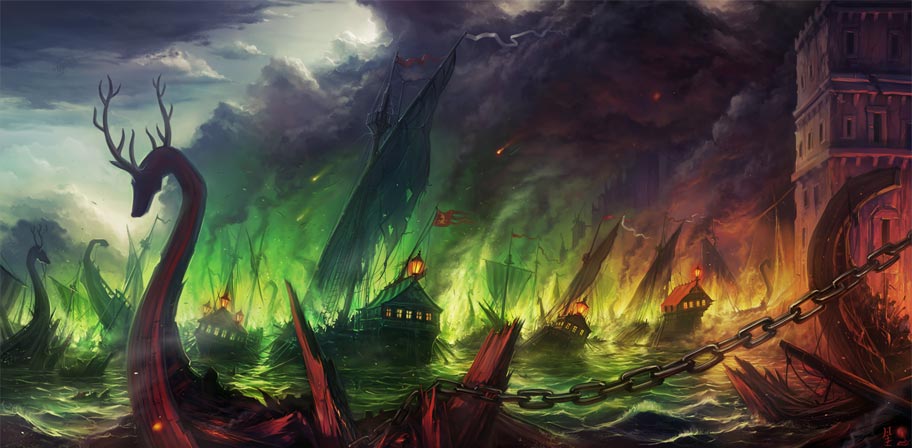
Battle of the Blackwater, art by haryarti
The important thing isn’t the specifics of the fighting, but how it affects the characters we care about.
To take an example: Consider George R.R. Martin’s first two volumes of A Song of Ice and Fire, A Game of Thrones and A Clash of Kings. These books are, basically, about a war but how many big battles do we actually get to see? The answer is two, one per book: we ride with Tyrion against the Starks in A Game of Thrones, and see the Battle of the Blackwater with Davos in A Clash of Kings. Martin is an expert at advancing the plot — that is, the state of the war for the Seven Kingdoms — without actually having to show us the gory business. Characters are constantly being told the results of battles, or reading about them, or even just thinking about them afterward. And we don’t need to see it, because the important thing isn’t the specifics of the fighting, but how it affects the characters we care about.
So as the characters march off to war, or stay behind, or whatever it is they’re doing, remember that fighting doesn’t automatically equal tense, interesting scenes. A small group of friends after a battle, writing letters home and mourning a lost comrade, can be a far more interesting and revealing scene than the same group hacking apart the enemy. Conveniently, it also means a lot less research and world design to avoid the scorn of the war buffs — as long as you get the general outline of the time period correct, you don’t need to go into detail about tactics, weaponry, or all the other nitty-gritty.
The View From The Bottom
Now we’re getting a little deeper into it. You have a point-of-view character who is going to be at an actual battle, and something important is going to happen to her. But how to depict a battle in a way that feels realistic?
I’m going to show my war buff stripes here and say that this requires a bit of research. But, honestly, just a little! If you’re going to write about a character being in combat, you need to know what that’s like, and that’s an experience that (fortunately) most novelists don’t have. (And practically no novelists have experience of fantasy combat.) The best we can do is to read things that were written by people who wrote about the experience.
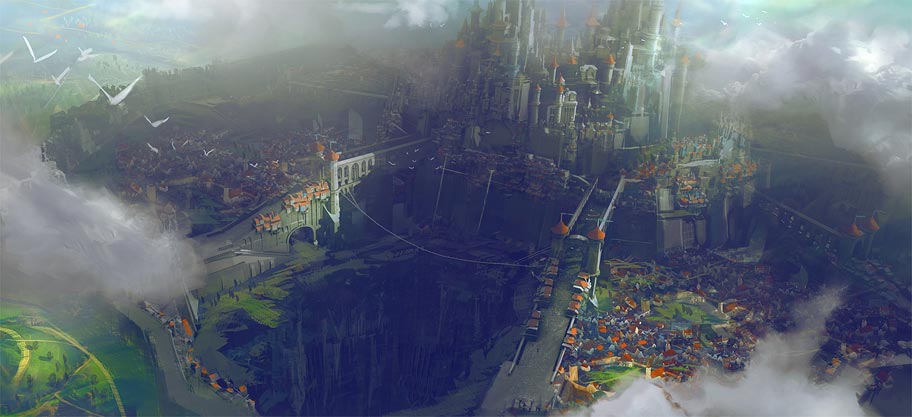
History is both broader and deeper than most people realize, so it pays to do a little bit of digging.
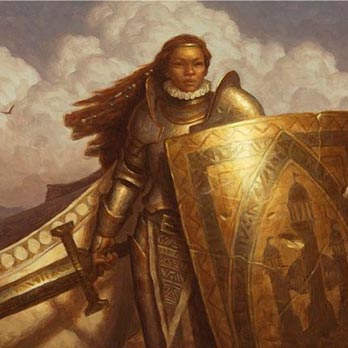
Art by Chris Rahn
History is your best friend here. The first step is to find the real-world society and time period most closely analogous to that of your fantasy characters. History is both broader and deeper than most people realize, so it pays to do a little bit of digging. Even that fantasy staple “the Middle Ages” covers a vast stretch of time, and even restricting yourself to European history gives you a huge range of cultures and circumstances to play with. The battles of Hastings and Manzikert were two very, very different affairs, in spite of the fact that they occurred within a few years of each other!
A good first step, from a military point of view, is to consider the level of organization of the relevant societies. Are they tribal peoples, where every able-bodied male forms a rough-and-ready militia in times of crisis? Are they feudal, with a dedicated warrior caste (knights, samurai, etc) that extracts tribute in exchange for protection? Do they hire mercenaries, and if so where do those mercenaries come from? Do they maintain well-trained standing armies, or raise hordes of peasant conscripts?
Each of these has its analogue in real life, and that should help you figure out roughly where to begin. This being fantasy, things aren’t going to line up exactly, but often analogous forms are possible. For example, in a world where magic is powerful, but costly and time-consuming to learn, peasants might support nobleborn mages to guard them from their enemies in the same way as a feudal lord and his knights.
Once you have a model (or possibly a combination of models) in mind, find some books that talk about what the fighting was like from the soldier’s point of view. This is important — unless your point-of-view character is a commanding general, when he goes into battle he probably won’t have much of a view. Most participants in a battle find their attention limited to what’s directly in front of them — they may not even know whether they’ve won or lost until everyone starts running away.
Most military history concentrates on the larger scale, the strategy and grand tactics and so on, but you don’t need all of that here. Look for things about small-unit tactics, personal histories, and descriptions of how individual combatants actually used their weapons and other equipment. Often these are only sections in larger books, which means that your local library is going to help. Grab every relevant history you can and skim to chapters with headings like, “The Soldier’s Life” or “The Day of Battle.”
For example: My book, The Thousand Names (released July 2), is set at the beginning of the Revolutionary / Napoleonic period in Western Europe. While I read a great deal (I probably fall into the last category, below) when it came time to find the soldier’s-eye-view of the fighting the big campaign histories were less useful than books like John Keegan’s The Face of Battle, Rory Muir’s Tactics and the Experience of Battle in the Age of Napoleon, and even Brent Nosworthy’s The Bloody Crucible of Courage (which covers the U.S. Civil War instead, but still contains some useful hints!)
Even a little bit of reading — even a single book! — will give you a pretty good idea of what a battle looked like from the point of view of the participants. And when your character is a participant, that’s all you need to give your narrative the ring of truth. You don’t need to document each tactical stroke and counter-stroke, only give a picture of what the fighting was like — what it was like to attack, to defend, to advance, to retreat — and who is still standing at the end of the day.
The Butcher’s Bill
Lastly, we come to the hardest part. Suppose you want to write, not just the story of a character who goes to war, but the story of a war. Perhaps your character is a general and you want to demonstrate his superior acumen on the battlefield. Perhaps (like me) you just love this sort of thing!
This is the part where I get a little huffy. I have read quite a few fantasy novels that take this route, when they really would have been better off in one of the above categories. It may be a touch of war buff elitism to say, “Don’t write about war if you don’t know what you’re talking about!”, but as I’ve detailed above, it’s perfectly possible to write about war with a minimum of extra research if you don’t feel compelled to give us the blow-by-blow. And you shouldn’t!
If that’s really where you want to go, however, I don’t think it’s too much to ask that you do your homework. You wouldn’t write a book with plot points revolving around, say, the fine details of a piano concerto without doing a little bit of research on the subject, or about the elaborate rivalry between Victorian stage magicians without doing some reading on that kind of magic. Similarly, before giving us a long, detailed account of a war, you need to develop an understanding that it’s not just a bunch of guys sticking pointy bits of metal into one another.
History is again essential. In addition to the “experience of battle” books noted above, now is the time to break out those giant campaign histories. (Chandler’s Campaigns of Napoleon is my personal favorite.) The thing to pay particular attention to is the reasoning of the commanders at crucial points of decision, since it’s those decisions that will form the moments of tension in your story. Try to put yourself in the general’s shoes, and ask what your options were, and why you might choose one over another. The best historians will call this stuff out, so be on the lookout!
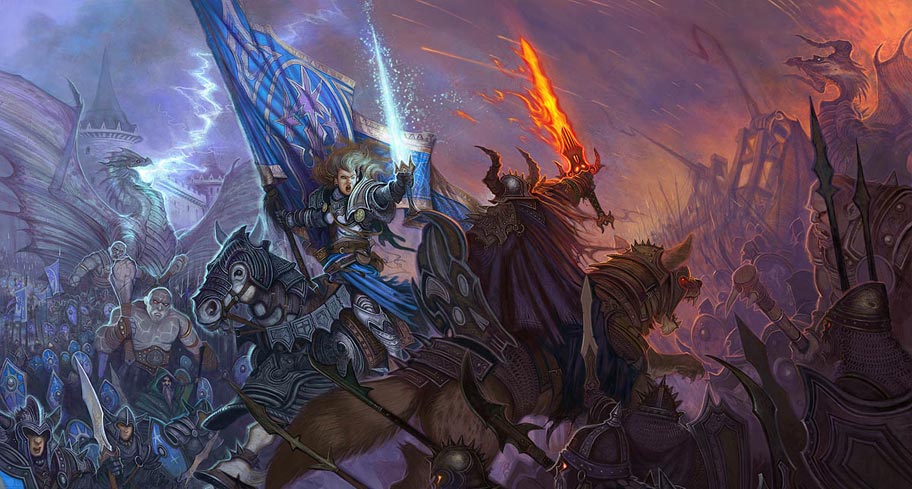
Another extremely useful technique is to play wargames, or at least the right kind of wargames. You should look past things like Starcraft and Warhammer 40,000, entertaining as these can be — they’re not going to give you the feel of a particular era. Instead, delve into the world of historical gaming, either digitally or on the tabletop.
For the latter, often a good technique is to locate a club in your area and ask if you can drop by one game night and be shown the ropes. In my experience, most historical wargamers are both knowledgeable and eager to inform, both on the games and the actual history in question. (Indeed, they are often difficult to shut up!) There are also dedicated conventions for wargames of various stripes, often small and inexpensive ones.
You don’t need to become an obsessive hobbyist to get the benefits of this. (Think of it like the police ride-alongs undertaken by mystery writers!) A few sessions should be enough to get you what you need: an increased understanding of the basic choices and decisions available to a commander of that particular era, and that particular scale, whether we’re talking vast formations of Mithridatic pikes or a couple of battalions of Napoleonic chasseurs. You can very quickly gain an appreciation of what a good situation looks like, how to get out of a bad one, and what spells disaster. Just remember that the god’s-eye-view of the wargamer is rarely available to a real general!
Aftermath
Having a giant war should never be the default, the way a story goes because so many stories that have gone before have done it.
The list of options above is by no means exhaustive. Indeed, we’ve barely scratched the surface. Still to be considered are how the fantasy in fantasy warfare might change things in unexpected ways, and how you can dramatize the impact of a war without ever venturing near a battle. But that would be venturing rather far afield, so we’ll leave them for another day.
Instead, let’s sum up. Having a giant war should never be the default, the way a story goes because so many stories that have gone before have done it. Like any other plot element, it should be deployed only when it helps the story. If you do decide to use it, a good rule of thumb is to match the level of detail (or the proximity of the points of view to the actual fighting) to your own level of expertise or willingness to research. If you just need a distant conflict to throw a pall over a hometown community, don’t feel the need to give us scenes of bloody battle. On the other hand, no prior expertise is really required — if you’re champing at the bit to read up on the battles of Fredrick the Great and tell us about his fantasy equivalent, you don’t need a military history degree to get on with it! Just head to your local library, and think about dropping by to visit the local lead-soldiers crowd. (At the very least, if they helped you out, they’re less likely to snicker!)
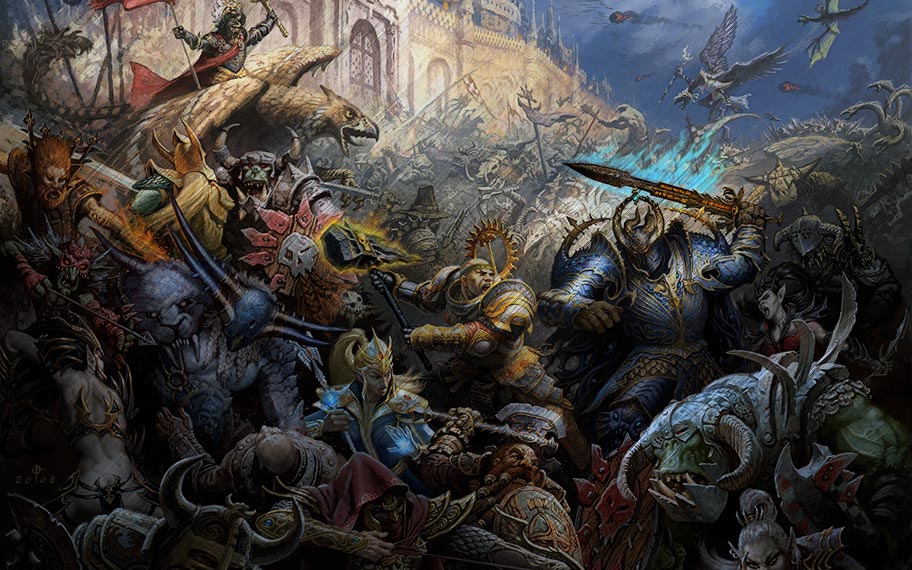
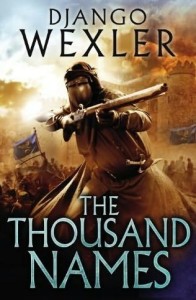


Anybody have a favorite example of fantasy war done right? I like R. Scott Bakker’s first trilogy.
Really great article. I often find how a fantasy author writes a war scene can make or break a book for me. Memories of Ice by Steven Erikson is one of my favourite books, largely because of the siege of Capustan, I also really like his running guerrilla war in Reapers Gale. Also a big fan of the way Paul Kearney does war, maybe even more so in Monarchies of God than the Macht Trilogy.
Thanks! I think the only one of Kearney’s books I’ve read is “The Ten Thousand”, I haven’t looked at Monarchies of God. I’ll have to investigate!
I love Steven Erikson, of course. Military-wise I think I’ll always like Deadhouse Gates the best for the long Chain of Dogs campaign. Memories of Ice bugged me a little in the second half, when the Malazans et al are invading the Domin; it feels like some supposedly very competent commanders (Caladan Brood, One-Arm, etc) do some really stupid things and get a lot of people killed for no readily apparent reason. That always bothered me.
DG was very good as well and the role the sappers play in the battle scenes was really fun. Completely agree about MoI, The siege is some of the best reading out there but the last two hundred pages are a little different. Might also be a particular fate that jades my memory of the Domin part.
I’d be interested to know, what else you recommend. Looking forward to the release of your book, I will definitely by buying it.
Miles Cameron’s the “Red Knight”, shows a keen eye, with regards to rhythm of combat, weaponry of the time period (in this case, a Medieval setting is approximate) and tactics. In reading his bio, he states that he’s somewhat heavily involved in war recreations of that era. If you favor historical fiction, Steven Pressfield, has written some thoroughly entertaining novels covering the Spartans, Alexander the Great and the Desert Rats of WW II. Cheers to your future reading enjoyment.
One of my inspirations for The Thousand Names was S.M. Stirling’s old series “The General”, starting with “The Forge”. The idea of doing a sci-fi/fantasy series based loosely on real history (in his case, the campaigns of Byzantine general Belisarius) really hit home for me. Those are SF rather than fantasy, but still definitely recommended!
I’m also fond of the Black Company series by Glen Cook. He’s a bit less “realistic” than some but does a good job adjusting traditional tactics to his fantasy world.
Erikson has been mentioned. Cook, too. More recently, Brian Mcclellan (also a Flintlock fantasy like yours) also is firmly mil-fantasy.
A very interesting article, Mr. Django. Though not a writer myself, I still find it enlightening to read about the writing process itself. Gives one a deeper appreciation of the well-cooked books!
Thank you. I’m glad you enjoyed it!
A great article and some serious food for thought. I’m not a big fan of war stories but what do you think of Mary Gentle’s Ash? That was one I really liked.
I can’t say that I’ve read that one. I may have to take a look!
I can second that recommendation, Django. Mary has a master’s degree in medieval military history, she gets it *right*
Django,
Got an ARC of your book, and after reading your article, I’m moving it to the top of my stack in order to get it read before the hardcover comes out (and I’ll be buying that, most definitely).
I own the Bakker and Kearney books, but haven’t read them. Ash I’ve looked at over the years but don’t own, so that will be remedied. Strongly agree with The Red Knight. There is some suspicion that author Miles Cameron is also author Christian Cameron, who has many historical fiction novels under his belt, though they only seem to be released in British commonwealth areas (and, possibly, as e-books in other areas). Disagree with Brian McClellan’s Promise of Blood, as there are several things in it that just don’t happen with real commanders/armies (think about the lack of command support staff, think about who is/are used as messengers, think about the lack of security at headquarters and other places). I enjoyed the book on a number of levels, but there are weaknesses from a military standpoint, in my opinion. The only Joe Abercrombie book I haven’t read, The Heroes, would seem to be one to take a look at based on reviews: Three Men, One Battle, No Heroes (so it says on the back of the UK edition). I’m in the midst of a Steven Erickson re-read and I just read Memories of Ice a couple of months ago. However, I’m not remembering the particularly wasteful moves by Brood and One-arm, so I’ll have to take another look at that with a more critical eye. Trying to think of something I’ve actually read to contribute to this thread…what about Robert Adams’ Horseclans books? It’s been quite a few years since I read those, but I seem to recall them as being pretty militarily authentic (maybe not strictly fantasy, but there are similar elements, i.e., immortality, psychic powers of various natures, etc.).
I hope you enjoy The Thousand Names! Finally getting close to the release, it feels like it’s been forever.
I read Promise of Blood and liked it a lot, but he definitely takes the approach of avoiding descriptions of big field battles in favor of smaller combats, which makes a lot of sense but means it’s not as satisfying militarily as it might be. (He does get “canister” and “shrapnel/shell” mixed up though.)
Re: Memories of Ice, the section I’m thinking of is when they are approaching the Pannion capital, and end up getting like half the Malazan army killed fighting undead lizards and magic condors. Seems like it would have made a lot more sense to wait for the various awesome demi-gods (Rake, Brood, etc) to help out with that.
The Heroes is excellent, and I highly recommend it. I haven’t read the Horseclans books — another one to add to my list!
Very interesting article. I love military fantasy and science fiction, I haven’t read any Erikson yet, but Joe Abercrombie is one of my favourite authors precisely because he manages the convey that feeling of chaos and grit in his combat scenes (both the larger battle and duels) that I imagine a real battle must be like.
Another war focused (and criminally underrated IMO) fantasy I really like is A Trial of Blood and Steel by Australian Joel Shepherd. The series tells the progress of a crusade-like war and it’s many religious and political complexities. Like Abercrombie Shepherd manages to show the battles from different perspectives (from a grunt’s eye view in a shield wall formation, to an honor duel between 2 sword masters, to midnight harrying attacks of an encamped army, to the general’s view of a battle from his command post) and convey all the emotions that come with the different situations. He also pitches different cultures with different army types against one another and makes great use of the different style of tactics they all use (Massive Fuedal conscript armies, Tribal militias (think Kelts), professional Roman styled infantry armies, and non-humans with an on guerrilla tactics focused elite warrior caste) . I’m by no means an expert on any sort of warfare, but for me at least, I feel that he does a lot of things right in this series. It might just be my favorite fantasy series ever. Tor.com did a nice write up of the series, that puts it a lot more eloquently than I can, around the time the final book came out. http://www.tor.com/blogs/2011/04/joel-shepherds-a-trial-of-blood-and-steel
Thanks, Kevin! I’ve never heard of the Shephard series, but it actually sounds right up my alley — I’ll see if I can rustle up a copy!
[…] more from Django, be sure to read Django’s article, ‘So You Want to Have a War?’ about the research and planning behind military fantasy. It’s good […]
[…] raptor sent me a link to this blog today which looks at some of the challenges of writing fantasy battles, and whether you should even […]
[…] (and probably shouldn’t) give us the blow-by-blow. I wrote a guest post on this subject for A Dribble of Ink that contains a lot more of my thinking. 52 Reviews: I noticed that much like […]
It’s been too long since I last read them, but I’m a fan of Elizabeth Moon’s Deed of Paksennarion books — per interviews I read with her, she spent a lot of time getting the details & logistics correct (how many mules in the pack train, etc.).